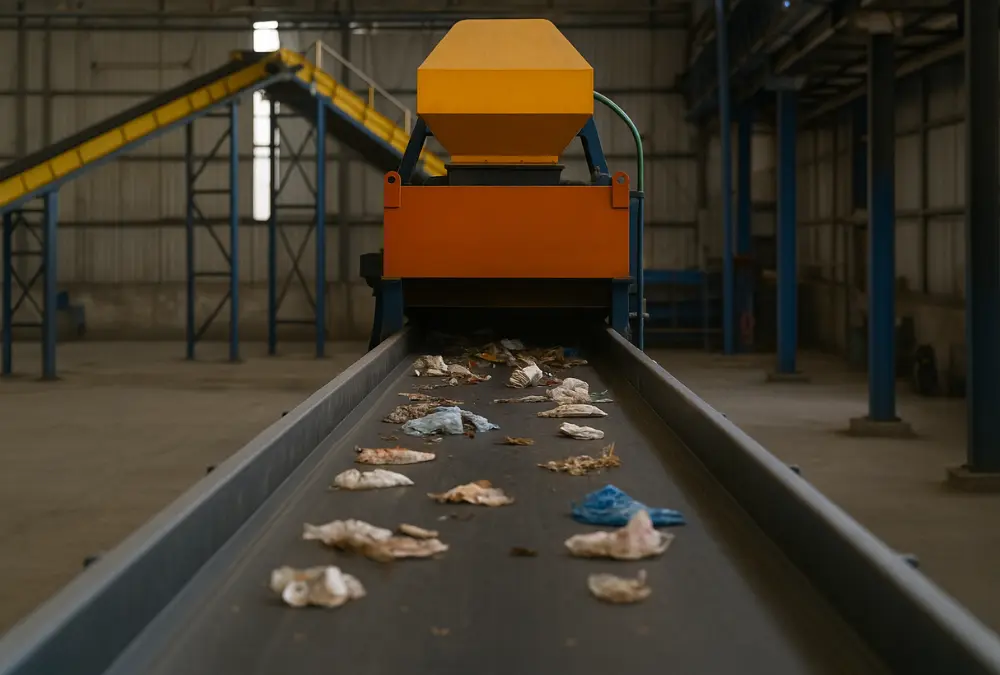
As waste generation continues to rise, efficient recycling has become crucial for environmental sustainability. However, recycling efficiency doesn’t just depend on processing technology — it starts much earlier, with waste segregation and preprocessing.
These two steps ensure cleaner input, better recovery of resources, and lower operational costs—forming the backbone of a successful recycling system.
What Is Waste Segregation and Pre-Processing?
Waste segregation is the process of separating waste into categories—such as biodegradable, recyclable, hazardous, and inert—right at the source.
Pre-processing, on the other hand, refers to the mechanical and manual operations (like shredding, screening, and sorting) that prepare waste for efficient recycling or energy recovery.
Together, these steps improve waste quality, reduce contamination, and enhance recycling outcomes.
Why Is Waste Segregation Important Before Recycling?
Segregation is critical because it ensures recyclable materials are not contaminated by food waste, hazardous waste, or non-recyclables. This improves material purity and reduces processing costs.
Key benefits include:
- Higher recycling efficiency and recovery rates.
- Reduced contamination and rejections.
- Better product quality of recyclables.
- Lower environmental and landfill impacts.
How Pre-Processing Boosts Recycling Efficiency
Once waste is segregated, preprocessing plays a vital role in making recycling smoother and more productive:
- Removes contaminants early—ensuring that harmful or non-recyclable materials don’t enter the main process.
- Ensures uniformity—shredding and screening produce a consistent feed size for downstream recycling systems.
- Increases recovery rate—automated sorting and magnetic separation extract maximum recyclable value.
- Reduces operational costs—less downtime, lower wear on equipment, and improved throughput.
Benefits of Integrating Segregation and Pre-Processing
| Benefit | Description |
|---|---|
| Higher Efficiency |
Cleaner input = smoother recycling process |
| Better Quality Output |
Reduces impurities in recyclables |
| Environmental Impact |
Lowers energy, labour, and maintenance costs |
| Regulatory Compliance |
Meets waste management norms and sustainability targets |
| Cost Savings |
Lowers energy, labour, and maintenance costs |
Practical Steps to Improve Waste Segregation and Pre-Processing
- Educate and train at the source—awareness programs for households and industries.
- Use color-coded bins—standardized segregation simplifies collection.
- Invest in preprocessing technology, such as shredders, trommels, and conveyors, for improved sorting.
- Regular audits—monitor contamination rates and recycling performance.
- Collaborate with recyclers—align segregation and processing standards.
Common Challenges and Solutions
| Challenge | Solution |
|---|---|
|
Improper segregation at source |
Awareness, incentives, and strict enforcement |
|
Mixed waste contamination |
Better collection and sorting systems |
|
High initial setup costs |
Long-term savings through reduced landfill and improved efficiency |
|
Behavioural resistance |
Education campaigns and reward programs |
Conclusion
Waste segregation and preprocessing are the foundation of modern recycling.
When waste is separated properly and prepared efficiently, recycling facilities can operate at maximum capacity, achieve higher recovery rates, and support a cleaner environment.
For industries, municipalities, and communities, adopting these practices isn’t just responsible—it’s essential for a sustainable future.
References:
Frequently Asked Questions (FAQs)
Modern technologies like air classifiers, optical sorters, and shredding systems automate pre-processing, improving accuracy, efficiency, and throughput
Source segregation ensures materials stay in a usable condition, promoting reuse and recycling. It keeps resources circulating instead of ending up in landfills.
Common preprocessing methods include shredding, baling, magnetic separation, screening, and drying. These prepare the waste for efficient material recovery or RDF (Refuse Derived Fuel) production.
Proper segregation ensures recyclables are cleaner, reducing sorting time and improving recycling yield. It also protects recycling machinery from damage caused by mixed waste.


